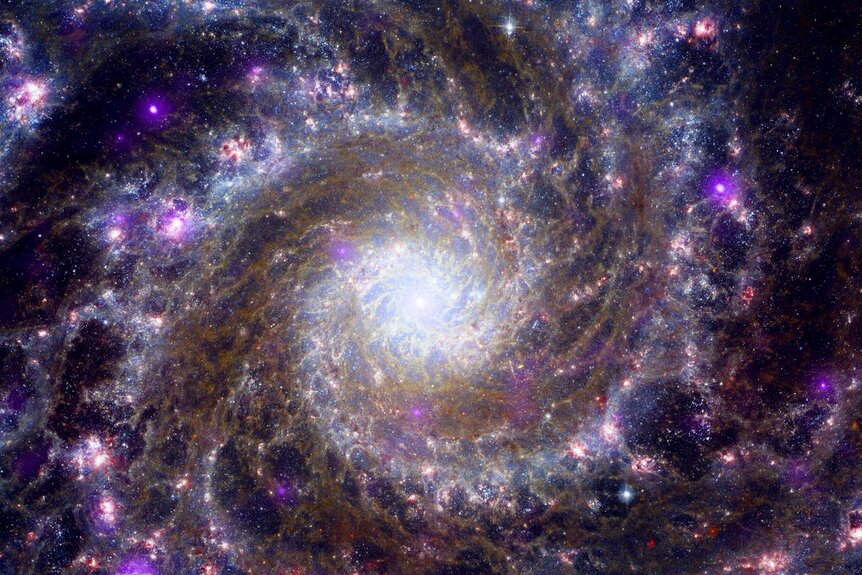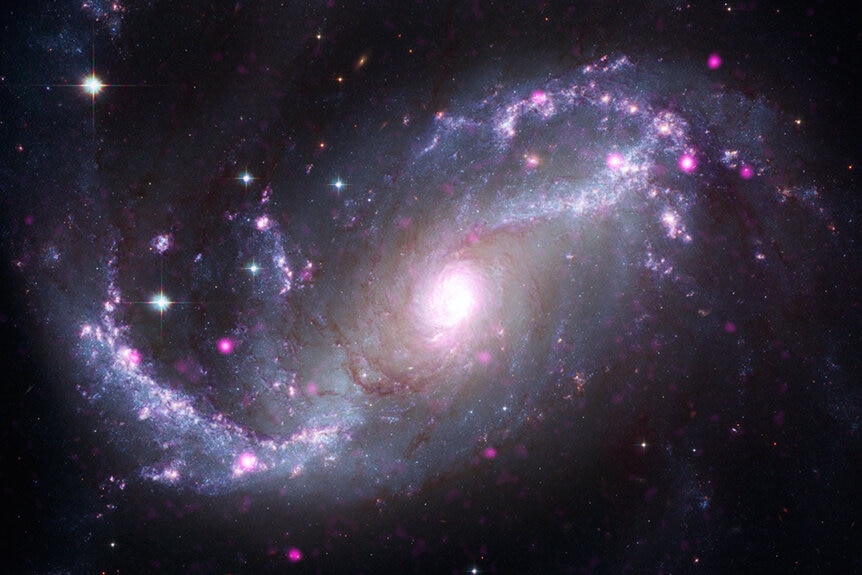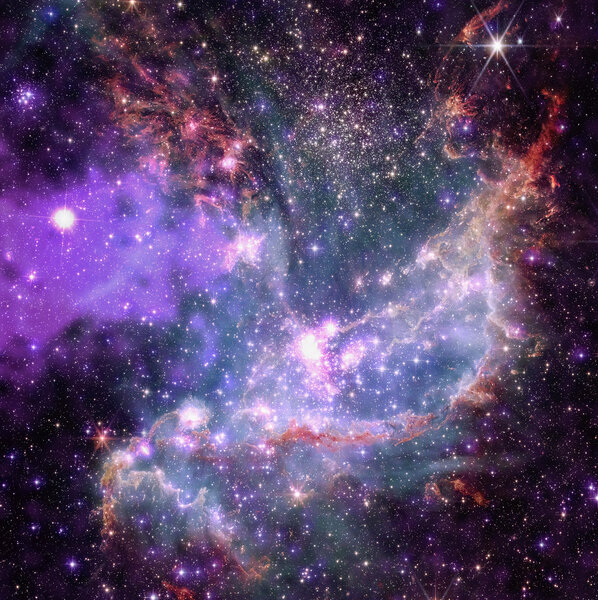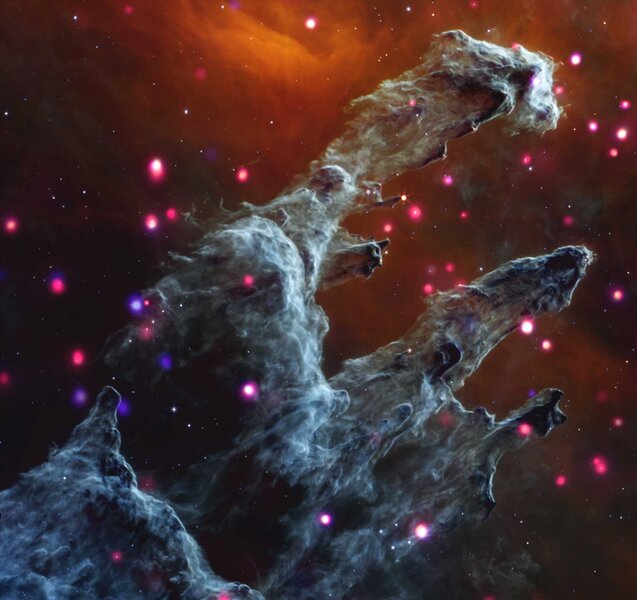Create a free profile to get unlimited access to exclusive videos, sweepstakes, and more!
NASA’s Latest Cosmic Images Color Space with the Brightest Crayons in the Box
Space looks so cuddly!

If you board an interstellar ship, slip into a stasis pod, and expect to wake up on another planet, you’d be justifiably surprised to find yourself adrift halfway there, with a damaged ship and a sizeable portion of the crew missing and presumed dead. The circumstances which have befallen the crew of The Ark (streaming now on Peacock!) aren’t ideal, but we can’t help being a little envious that they get to see the universe.
Until humanity becomes an interstellar species, we can only really glimpse the cosmos with the help of our machines. Recently, an international team of astronomers put together a collection of four composite images showing the universe in spectacular new light. They look like the sort of thing Lisa Frank would have put on a Trapper Keeper in the '90s. We almost expected to see a unicorn.
COLORING SPACE WITH THE BRIGHTEST CRAYONS IN THE BOX
To create these bubblegum flavored images, scientists relied mostly on data from NASA’s James Webb Space Telescope (JWST) and Chandra X-Ray Observatory, with supplemental data taken from the Hubble Space Telescope, the retired Spitzer Space Telescope, the ESA’s XMM-Newton X-ray Telescope, and the European Southern Observatory’s New Technology Telescope. Together, they provided imaging data from various parts of the spectrum from visible light to X-rays, near-infrared, and infrared.
RELATED: JWST Reveals Stunning New View Of The Pillars Of Creation
Having instruments capable of seeing invisible light gives scientists the ability to get a fuller picture of what structures in space are actually like, without the limitations of our biology. Light from different parts of the spectrum can point to different sorts of materials or activities. Because X-ray and infrared light aren’t visible to us, astronomers have to assign a color in the visible spectrum to represent them. In these images, Chandra’s X-ray data is presented in hues of purple, pink, and red, giving the images a haunting ethereal glow, perfect for your Trapper Keepers and pencil cases. Four objects in total received the Lisa Frank treatment by NASA, including two galaxies, a nearby star cluster, and a nebula.
MESSIER 74 (M74)
M74 is nicknamed the Phantom Galaxy, because it is relatively dim and difficult to spot. In the new composite, you can see large bands of stars stretching out in spiral arms with streaks of gas and dust cutting through. Chandra highlights high energy stars spewing stellar and X-ray light into the cosmos.
NGC 1672
A barred spiral galaxy roughly 60 million light-years from here, NGC 1672 is distinct from more typical spiral galaxies thanks to the strong band of stars in its center with arms attached to the ends. It points at Earth face on, giving astronomers a clear picture of the entire galaxy, as if seeing it from above. It is also of interest to astronomers because of its active galactic nucleus, housing a supermassive black hole actively consuming material. Chandra reveals dense objects like neutron stars or black holes consuming matter from nearby stars and glowing light bright X-ray spotlights.
NGC 346
Zooming in from an entire galaxy to something a little more intimate, astronomers pointed at a star cluster in the Small Magellanic Cloud, roughly 200,000 light-years from here. In this image, the JWST highlights streaks of gas and dust with stars forming inside. Its data is red, green, and blue, and dominates the right side of the image. On the left, however, you can see a brilliant purple cloud pressing in. It is the leftover remains of a supernova. You can also spot bursts of X-ray activity throughout, as young stars send their powerful solar winds out into interstellar space.
THE EAGLE NEBULA
Last but certainly not least is the Eagle Nebula, home to the famed Pillars of Creation. The JWST recently imaged the Pillars, adding to the already incredible views provided by Hubble years ago. Now, Chandra adds its own perspective, highlighting young stars, burning brightly, like painted polka dots across the night sky. The more we look at these, the more we’re convinced that every image of space should get a cotton candy makeover.
For a decidedly less adorable view of space, catch the first season of SYFY's The Ark, streaming now on Peacock!


































